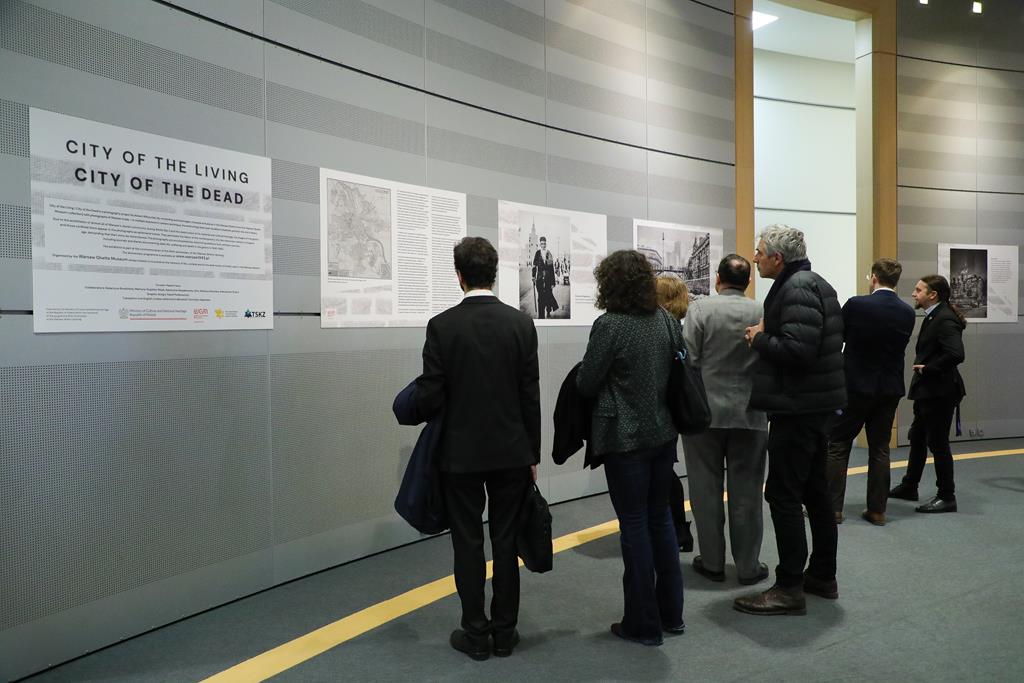The European Parliament in Brussels is hosting the exhibition City of the Living / City of the Dead – a photographic project by Robert Wilczyński consisting of 20 panels. Combining archive photographs from the ghetto area (from the collection of the Warsaw Ghetto Museum) with images of today’s Warsaw, the artist highlights the City’s past which seems to have been irretrievably lost.
The opening of the exhibition, attended by the Minister of Culture and National Heritage, Piotr Gliński, was part of the celebrations marking the 80th anniversary of the Warsaw Ghetto Uprising. The head of the culture ministry also took part in the seminar “Through if be to die, we will fight…. And our deeds will live forever. Legacy of the heroes of the Warsaw Ghetto 1943-2023”.
“Warsaw today is a city of the living. Poland is a country of the living. But we do not forget those who died or were murdered. The memory passed down through the generations must last forever. And today we are its custodians”, said Minister Gliński during the ceremony in Brussels.
Minister Gliński recalled that the Warsaw Ghetto Uprising, whose 80th anniversary is being commemorated this year, was the first metropolitan uprising and at the same time the largest uprising of the Jewish population during World War II and the German occupation. He pointed out that the next effort was the Warsaw Uprising, which lasted 63 days.
Opening the exhibition, the head of the Ministry of Culture stressed that it was one of the many forms and events supported by the Polish state as part of the commemoration of the 80th anniversary of the Warsaw Ghetto Uprising. He pointed out that the exhibition symbolically shows how history is intertwined with the present.
“These moving photographs of contemporary Warsaw, which feature people and places from 80 years ago, tell the story of a city that no longer exists. A city burnt down by the Germans in revenge for both our uprisings, the one in 1943 and the one in 1944”, said Minister Gliński.
Arkadiusz Słomczyński





